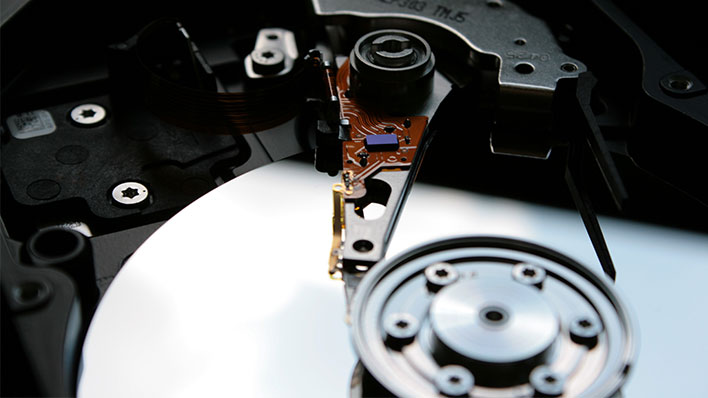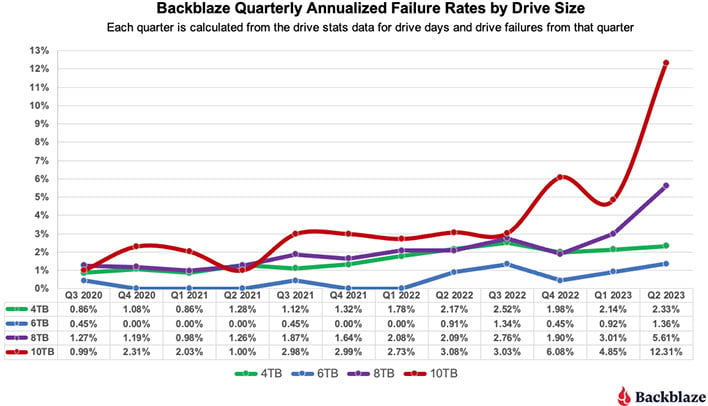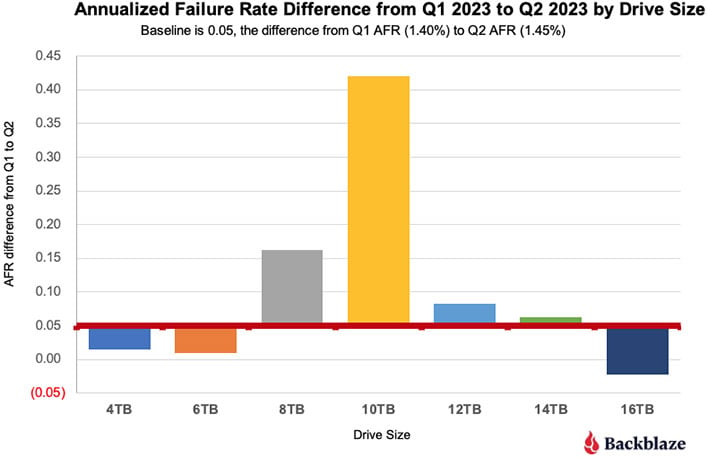Back Up Your Data ASAP If You Own This Capacity Hard Drive

Mechanical hard disk drives (HDDs) are alive and well as a bulk storage medium with companies like Seagate paving an HAMR path to 50TB and beyond, but as with any piece of tech, not all models are created equal. Fortunately, cloud backup firm Backblaze frequently shares drive failure stats for its fleet of HDDs (and SSDs), and its latest storage report might make you think twice about investing in one particular capacity.
Let's dispense with the suspense and get right into it—if you're rocking a 10TB HDD, and specifically Seagate's Exos x10 (ST10000NM0086), you might want to back up your data sooner than later. It had the highest failure rate of any capacity or singular model last quarter in Backblaze's Q2 2023 storage report, as well as the largest quarterly jump.
There's plenty to caveat in looking at and comparing stats in these reports, such as how the annualized failure rate (AFR) is calculated, the number of drives employed, specific models and even batches, and so forth. It's an imperfect science for sure—plain old 'luck of the draw' can be a factor that's difficult if not impossible to measure with 100% accuracy.
Even so, these reports give us gobs of data to pore over. And what the Q2 2023 report seemingly shows is that Backblaze's fleet of 10TB HDDs had a rough quarter. See that red line in the graph above? That's not ideal. Same goes for the line attached to 8TB capacity models.
Also concerning is the graph showing the change from Q1 to Q2, in which the AFR of 10TB HDDs saw the biggest jump.
"The red line is our baseline as it is the difference from Q1 to Q2 (0.05%) of the lifetime AFR for all drives. Drives above the red line support the increase, drives below the line subtract from the increase. The primary drives (by size) which are 'driving' the increased lifetime annualized failure rate are the 8TB and 10TB drives," Backblaze states.
Ah, but those pesky caveats muddy the waters a bit. In this instance, it's mentioned that there are relatively few 10TB HDDs (1,124) compared to the number of 8TB drives (24,891). Backblaze also points out that the lifetime AFR for all 8TB drives went from 1.42% in Q1 to 1.59% in Q2, which is a nearly 12% jump.
If you really want to dizzy yourself, then compare the quarterly data with overall failure rate of active drive models over the past decade (April 20, 2013 to June 30, 2023). Suddenly the AFR of that 10TB Seagate drive looks a lot better at 2.24%. They've only been deployed for a few years, though, which is why the graphs above are somewhat alarming—they show the 10TB capacity going from a 0.99% failure rate in Q3 2020 to 12.31% in Q3 2023.
"Are we worried about the increase in drive failure rates? Of course we’d like to see them lower, but the inescapable reality of the cloud storage business is that drives fail. Over the years, we have seen a wide range of failure rates across different manufacturers, drive models, and drive sizes. If you are not prepared for that, you will fail," Backblaze states.
We should also note this report is far from a condemnation of Seagate. Of the six drive models that had zero failures in Q2 2023, two of them were Seagate HDDs (ST8000NM000A, which is an 8TB drive, and ST16000NM002J, which is a 16TB model).
At the end of the day, the cloud backup firm says it's not really worried by the uptick in failures, "but we are not arrogant either. We'll continue to monitor our systems, taken action where needed, and share what we can with you along the way."
Likewise, so should you (minus the sharing part). Whether you're rocking a 10TB HDD for bulk storage or any other capacity, it's a good idea to have redundancy in place (including an offsite backup in case there's a fire, flood, or some other disaster). But especially if you're rocking a 10TB, based on the latest storage report.



